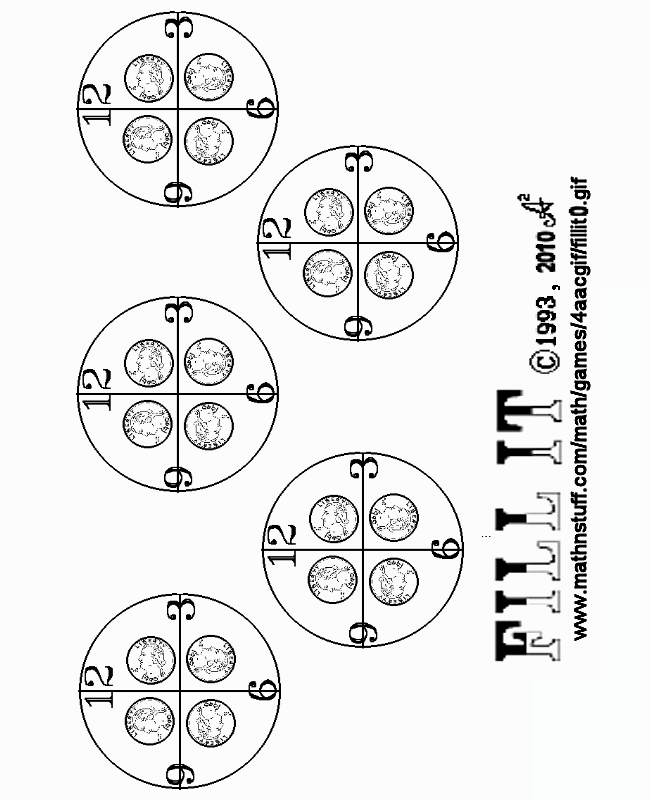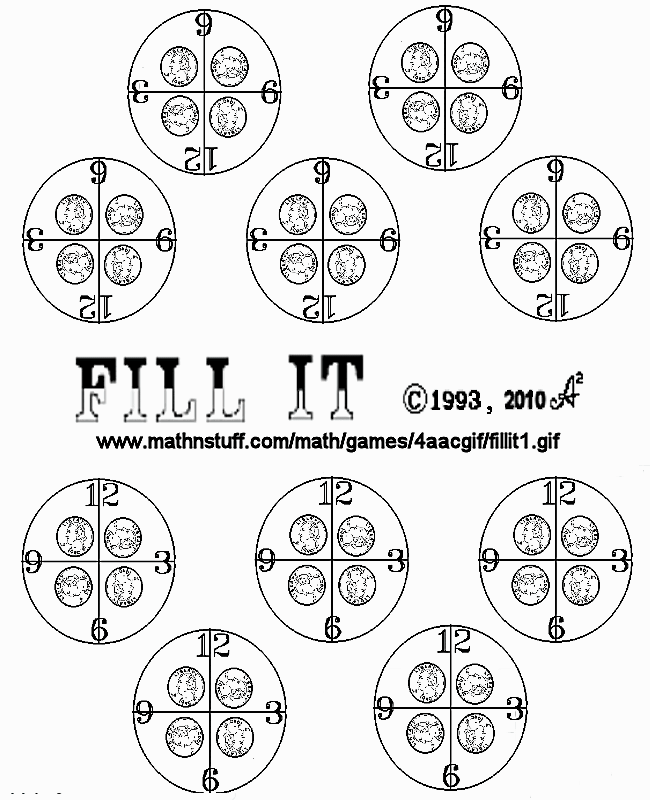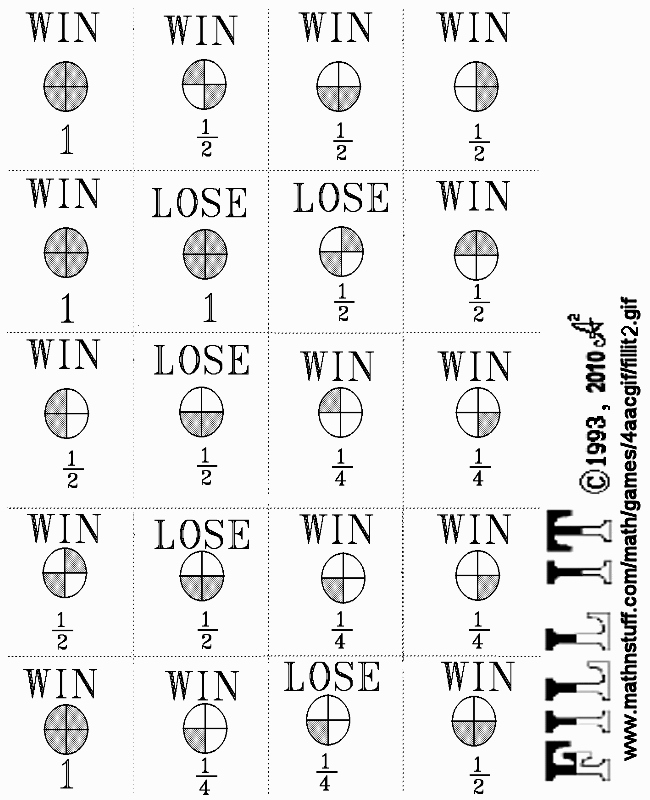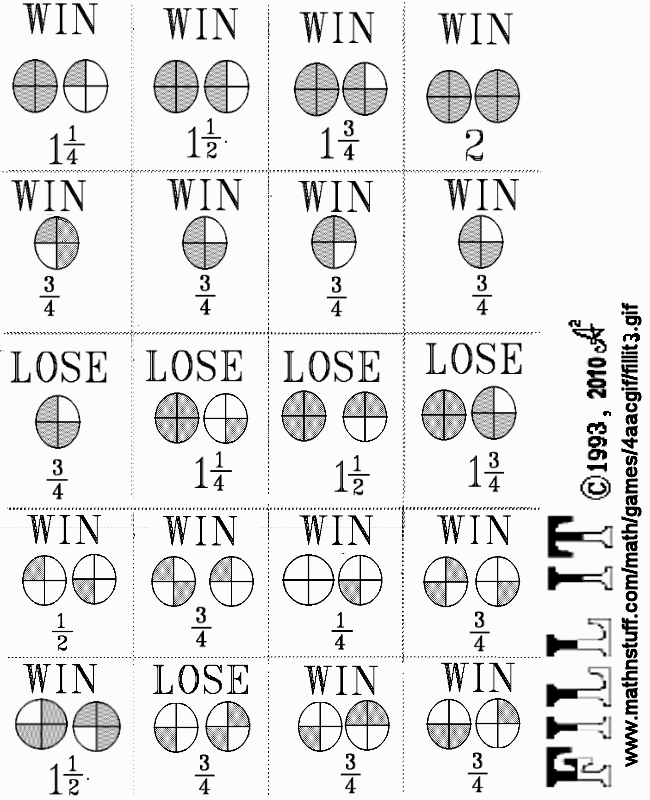MATH GAMES FOR ADULT AND CHILD
FILL IT
TOPIC AND LEVEL: Counting: Beginning, Intermediate, Advanced;
Addition/Substraction: Intermediate, Advanced;
Order: Intermediate, Advanced
PLAY AFTER: HOW MANY WOULD YOU LIKE?
PLAY WITH: All games
EQUIPMENT:
- One or two game boards (5 circles) for each player.

- Marking pieces or quarters
- A decks of cards as listed below or as designed by you the Adult player.
TO WIN: Be first to fill or overfill the board.
TO PLAY:
- Select or create an appropriate deck of cards. Choose mostly cards the child likes. Include one or more losing cards. Consider using a card which has not been used in other games in order to expand the child's numeracy.
- Shuffle the deck.
- Players take turns drawing a card and filling their board as directed.
- If told to lose more than one has, lose what you have but no more.
| Prepared Cards: | 3 of "Win 1" | 1 of "Lose 1" | 8 of "Win 1/2" | |
| 3 of "Lose 1/2" | 6 of "Win 1/4" | 1 of "Lose 1/4" | 1 of "Win 2" | |
| 2 of "Win 1 1/2" | 1 of "Lose 1 1/2" | 8 of "Win 3/4" | 2 of "Lose 3/4" |
- VARIOUS DECKS:
- Game 1: "Win 1" Cards, "Lose 1" Cards, "Win 1/4" Cards, "Lose 1/4" Cards,
- "Win 3/4" Cards, "Lose 3/4" Cards
- Game 2: "Win 1/2" Cards, "Win 1" Cards, "Lose 1/2" Cards
- Game 3: "Win 1/2" Cards, "Lose 1/2" Cards , "Win 1" Cards, "Lose 1 " Cards,
- "Win 1/4" Cards , "Win 3/4" Cards
- Game 4: All cards
- "Win 3/4" Cards, "Lose 3/4" Cards
FILL IT teaches the vocabulary and addition of simple fractions. The scope of content may be varied by the addition of more cards, in the same manner it is varied in SUMTHING ELSE. The goal is to cover or fill the board.
When I teach the game to teachers, I use the board so two people can play opposite each other.
One game board is needed for each player. Units on the board are marked in halves and quarters. Both time and money are measured in half, quarter, and tree-quarter units, as well as in whole units so, though the board may be used to develop time or money measurement the goal of the game at this level is not to "reinforce" these skills but rather to set the stage for later time and money measurement.
Use whole and half unit cards for beginning play. Shuffle the deck and place it in a draw pile. Players in turn draw a card and fill their boards with chips or quarters according to the cards they draw. The discard deck should be reshuffled when more cards are needed.
As with many board games, the adult does most of the work when the game is first introduced, but children quickly learn to do more of the work.
Click on the image, to show just the image for printing. 
 |

 |
